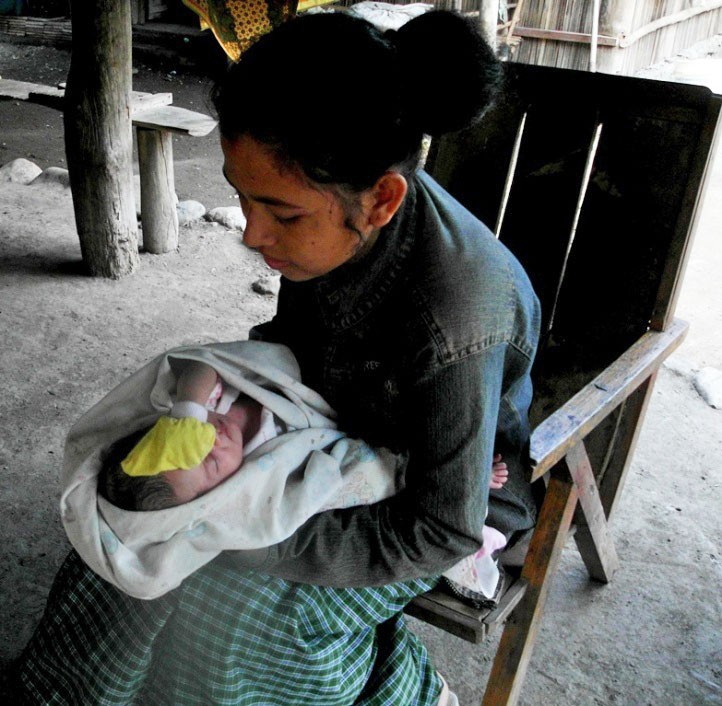
March 2015—Timor-Leste has one of the highest maternal mortality ratios in the Southeast Asia and Pacific region—557 deaths per 100,000 live births. Post-partum hemorrhage causes nearly 50 percent of maternal deaths. Due to delays in identifying hemorrhage, reaching health care facilities in rural terrain, and receiving necessary care such as a blood transfusion or surgery, many Timorese women die before receiving lifesaving treatment.
Joana*—a healthy, 19-year-old woman—had successfully given birth once before, yet she almost became one of these statistics. Just minutes after delivering her second son at Oecusse Referral Hospital in western Timor-Leste, Joana started to bleed heavily due to uterine atony—an extremely dangerous complication that occurs when the uterus fails to contract following delivery. The midwife, Francisca de Sousa, began uterine massage to stop the bleeding, while another health worker called the obstetrician, Dr. Humberto Velasquez Romero.
“When I arrived, the patient had already lost a lot of blood, despite intensive uterine massage by the midwife,” said Romero. “She was becoming unconscious. Within a short period of time, a woman with this condition can bleed to death.”
Fortunately, Oecusse Referral Hospital is supported by USAID’s Health Improvement Project, which introduced the innovative non-pneumatic anti-shock garment (NASG) at the request of the Timorese Ministry of Health (MOH) in 2014 to save mothers’ lives.
The NASG is a low-technology first-aid device that can slow excessive bleeding and stabilize a mother with post-partum hemorrhage until she reaches a health facility or appropriate treatment. NASGs, which are packaged with postpartum hemorrhage kits supplied by the MOH, compress the lower part of the body so that blood can circulate in vital organs.
Joana recalled the intensity of the incident: “All I remember right after my son was born was an emergency situation around me. Then my vision became blurred, and I thought I was dying. I woke up inside the NASG and felt secure. I felt I was in good hands and close to my baby.”
Since the NASG was distributed to selected health facilities in four districts in October 2014, the device has saved the lives of 16 women suffering from post-partum hemorrhage. After trained health workers applied the NASG according to the MOH’s protocol, all 16 women were discharged from the hospital with no further complications.
USAID’s Health Improvement Project, which runs from 2011 to 2015, is working with the MOH and the National Health Institute to train midwives and other health workers on NASG application, patient stabilization and transfer, and removal and cleaning of the device. Ongoing training and supportive supervision aims to maintain standards among trained health workers, thereby saving more mothers in some of Timor-Leste’s most remote communities.
*Name changed to protect identity.
LINKS
Follow @USAIDTimorLeste, on Flickr, on YouTube







Comment
Make a general inquiry or suggest an improvement.